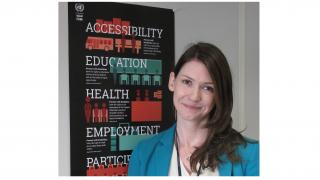
Deaths due to non-communicable diseases (NCDs) in low- and middle-income countries (LMICs) are expected to surpass deaths from infectious disease and maternal and child health issues.
Even now we see the top causes of death and disability in LMICs mirroring those in high-income countries (HICs), including conditions such as heart disease and chronic obstructive pulmonary disease.
While improvements in life expectancy provide some explanation of why more people in LMICs are affected by NCDs, it is less clear why they are contracting these conditions at a younger age and with worse outcomes than those in HICs.
The problem is compounded by inadequate funding. Although NCDs make up more than half of deaths and disabilities in LMICs, only 4.6 per cent of development assistance for health was allocated toward this issue in 2013.
The World Health Organization (WHO) has put NCDs on the global health agenda. Their Global Action Plan for the Prevention and Control of NCDs, which includes a target to reduce premature mortality due to NCDs by 25 per cent by 2025, was endorsed by the 66th World Health Assembly.
However, we know that these will be challenging targets as the growth of NCDs comes at a time when the fight against infectious diseases has still not been won. Maternal and child health issues are still prevalent and emerging threats remain inadequately addressed in settings with weak health services, as we saw with Ebola.
The post-2015 Sustainable Development Goals (SDGs) acknowledge the need to identify health – including the rising tide of NCDs – as a development problem. But in defining ways to measure the SDGs’ progress in this field, there are challenges for the wider global health community:
- How do we innovate healthcare delivery models so that health services address both acute and chronic care in an equitable manner?
- How do we empower patients and their families and communities to take more responsibility in the prevention and management of their own disease?
- How do we reach the urban poor who are most at risk of NCDs?
At the Novartis Foundation, we believe that public-private partnerships are the right model for achieving the SDGs in health, especially those relating to the dual burden of communicable and non-communicable diseases.
These partnerships should focus on innovative healthcare delivery models and community-based programmes that can ease the burden on healthcare systems. For example, one lesson from successful infectious disease interventions in LMICs has been that shifting certain tasks to less skilled health workers and community members is an efficient way to remediate the general shortage of skilled health professionals.
Just as importantly, there is an unprecedented opportunity to leverage digital health technology as an enabler to innovate health services. Technology can empower patients to take more responsibility for their own health, expand patient reach, enable more action-oriented health surveillance systems and support leap-frogging of healthcare solutions from high- to low-income settings.
The Novartis Foundation supports a project in Ghana where we and our partners are seeking to improve hypertension control. By maximising opportunities for screening and care and self-management in the community, we aim to enhance the primary healthcare system.
In Ghana the WHO estimates that 27 per cent of adults are living with hypertension, the number one risk factor for cardiovascular disease, yet most sufferers won’t even know they have it.
Our hypertension programme is being developed, implemented and measured in collaboration with FHI 360, the Ghana Health Service, the London School of Hygiene & Tropical Medicine, the School of Public Health at University of Ghana, and VOTO Mobile. It will include a range technological applications such as e-guidelines for the healthcare workers as well as healthy living tips for patients.
While increased availability of medicines and vaccines is an important factor in how we manage the double burden of communicable and non-communicable diseases through the SDGs and beyond, ultimately it is the innovation in healthcare delivery that is most critical. We need new models of healthcare to drive transformational change in the health of underserved populations.
Ann Aerts is Head of the Novartis Foundation. She joined the organisation after holding a number of leadership positions at Novartis and the International Committee of the Red Cross in Geneva. In July 2014, Ann was nominated by PharmaVOICE as one of the 100 Most Inspiring People in the life science industry

























